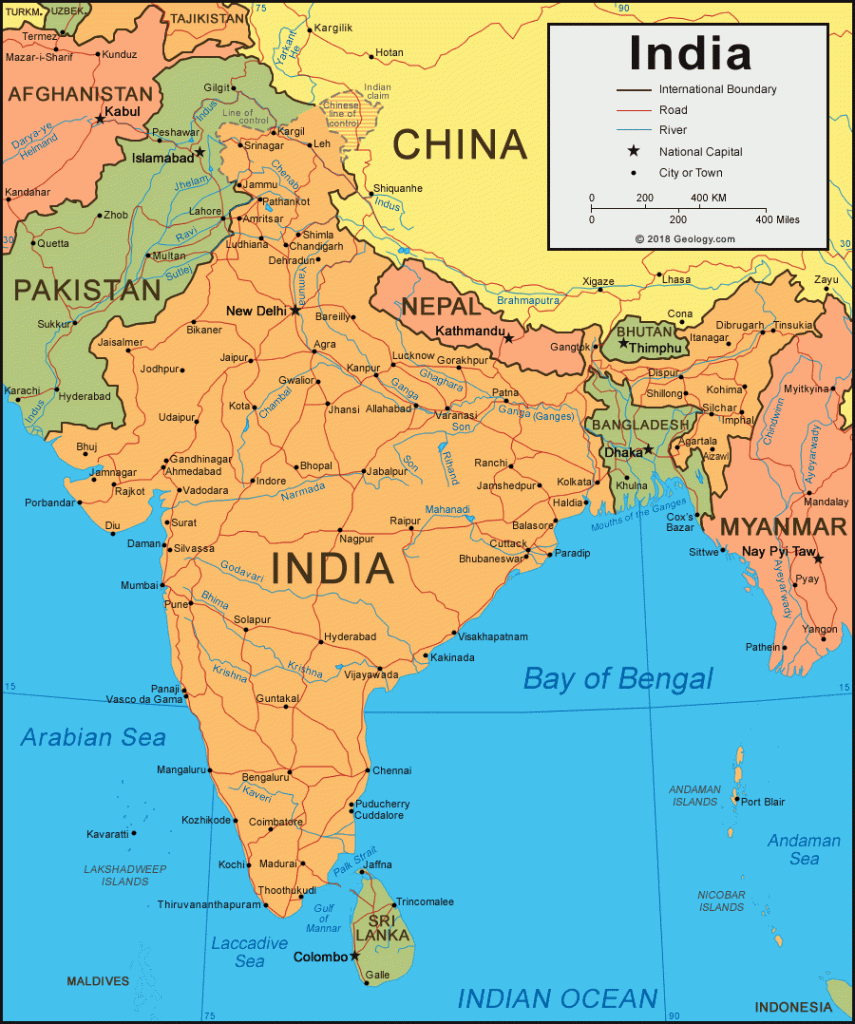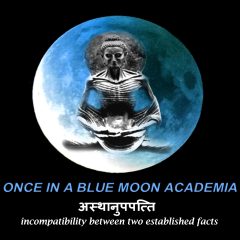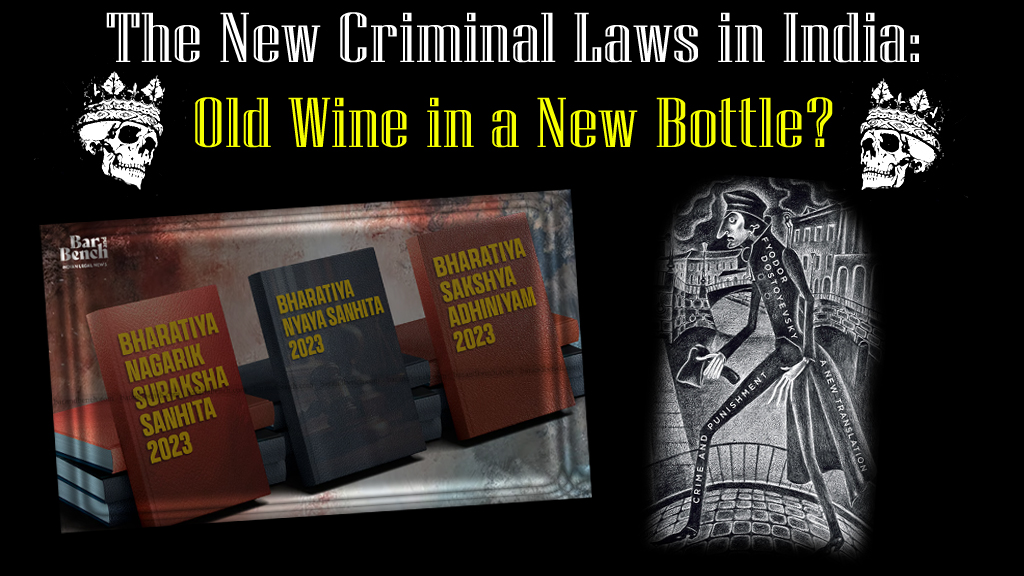Posted on 25th June, 2024 (GMT 19:50 hrs)
With the beginning of the 18th Lok Sabha and the formation of a new, fragile coalition government that appears to have lost all of its previous show-off of tyranny and terror, it is time for three new criminal laws to take effect, viz., the Bharatiya Nyaya Sanhita (BNS), the Bharatiya Nagarik Suraksha Sanhita (BNSS), and the Bharatiya Sakshya Adhiniyam (BSA), which will replace the Indian Penal Code 1860, the Criminal Procedure Code 1973, and the Indian Evidence Act 1872, respectively.
Given below are the PDFs of these three new criminal laws:
Now, there are several problems and issues that have emerged with the introduction of these modified criminal laws, which are 70% similar to the codes they are replacing.
What are those problem-areas in brief?
The Laws will lead to the following:
1. Lengthening of Police Custody time period to 90 days (from the earlier 15 days), which is redundant, and might contribute to the loss of life and liberty (Article 21, Constitution of India) of the Accused in question, who might be subjected to all forms of custodial torture within this period as well as possible custodial murder (Do we not remember Stan Swamy’s recent example?). The basic rights or amenities of the accused will be in question. Thus, the concept of fair-play and “a person is assumed innocent until proven guilty” will be suspended in light of these new provisions so introduced.
2. Delaying in granting Bails, therefore committing the delay in justice with multiple appeals. This will directly result into more pending cases, more years in the life of the accused that shall be spent in jail and court with succeeding lines of appeals until they are fully exhausted. This will embody: Justice delayed, justice denied. The 83k ongoing criminal cases that are already pending at the Indian courts will become more distant. Criminal cases will continue indefinitely for years and years. The pendency of cases could increase by 30% or even 40%, as per former SGI Indira Jaising.
3. There is a disguised reappearing of the colonial period’s Sedition Act (Section 124A of the Indian Penal Code) as the Section 152 of the Bharatiya Nyaya Sanhita, which is now aimed towards subverting and terminating the so-called “anti-nationals” who threaten the so-called “sovereignty and integrity of the nation” (the last two terms are a new addition).
How to define anti-national? How to define sovereignty and integrity? Moreover, who defines these? The Supreme Court of India had already given a verdict that made the Sedition Law temporarily disappear as a remnant of the problematic colonialist ideology (See Appendix). The ideological motivation for this reappeared provision is nothing but the Saffron Fascist aim to imprison dissenting voices mercilessly in the name of an ethnographic, chauvinistic, fundamentalist, exclusivist and divisive form of nationalism, viz., Hindutva Nationalism.
Sedition Law “Colonial”, Why Don’t You Drop It, Supreme Court Asks Centre VIEW HERE ⤡ (As reported on 15th July, 2021 ©NDTV)
India: Supreme Court’s temporary suspension of sedition law a welcome step VIEW HERE ⤡ (As reported on 11th May, 2022 ©Amnesty)
Supreme Court’s Interim Sedition Order Is Tremendously Significant VIEW HERE ⤡ (As reported on 13th May, 2022 ©The Wire)
Moreover, what about China already taking in 38000 sq. kms of Indian territory? Is it not a severe threat to the sovereignty-integrity of the Indian nation? Why is the PM and his administration completely mute about that? Why are they so selective (we can view what is happening to Umar Khalid and what might happen to Arundhati Roy, for example, who are both justified in their respective stands to voice the rights of the oppressed) when it comes to the apprehension of these criminal laws?
China occupied 38,000 square km land of India, says Indo-Tibetan Coordination Forum Secretary VIEW HERE ⤡ (As reported on 8th December, 2023 ©India Today)
Moreover, the political map of India as depicted in the CIA World Factbook shows boundary lines and the 1972 Line of Control, constituting the political boundaries of India as recognized by the United States.

OBMA IS NOT RESPONSIBLE OR ACCOUNTABLE FOR THE ABOVE MAP. IT IS SIMPLY REPRODUCED HERE FROM THE FOLLOWING SOURCE FOR RAISING PUBLIC AWARENESS REGARDING THE COMPROMISED STATE OF OUR INTERNATIONAL BOUNDARIES:
SOURCE: India Map and Satellite Image VIEW HERE ⤡
See the state of J&K as well as Arunachal Pradesh as represented by the CIA in the above figure! Why is this so? What is the Indian nation-state’s ruling party (or parties, at present!?) doing about it? What is the role of the Vishwaguru here, as he is keeping mum about this serious curtailment of cartography? Is he himself anti-national?
Moreover, the Muslims are also being branded as anti-nationals and their existence is being rendered impossible by the Bulldozer Justice of the BJP and its associates with their majoritarian-totalitarian agenda. However, who are really anti-nationals? The Hindutvavadins themselves or the Muslims?
4. There are two further questions here: What was the necessity of these laws in the first place when India already had the three criminal laws? What was the need to unsettle the already settled?
Another more crucial question is: How were these bills passed? Well, the bills for these three laws were passed without any debate or discussion in the Parliament of India. It was done in 2023 when the Opposition was simply thrown out of the legislature by the then ruling party, i.e., BJP, months before the beginning of the 18th Lok Sabha elections.
Parliament proceedings | Lok Sabha passes Bills to replace British-era criminal laws VIEW HERE ⤡ (As reported on 20th December, 2023 ©The Hindu)
Criminal Code Bills Passed In Lok Sabha With Most Opposition MPs Suspended VIEW HERE ⤡ (As reported on 20th December, 2020 ©NDTV)
Thus, recently it has been remarked that:
New criminal laws must go through Parliament again VIEW HERE ⤡ (As reported on 20th June, 2024 ©The New Indian Express)
5. What about the high-rate of criminals within the BJP itself, the one who drafted these problematic laws in the first place? It seems that these laws are intended (implicitly) to apply only to innocent citizens, including legitimate protestors such as students, journalists, farmers etc., who shall be tagged as so-called “Urban Naxals”, whilst the BJP members will sit back and relax in the superrich pedestal. The BJP poses itself as a washing machine here, which, once joined, shall purportedly wash off all the sins/crimes! What a joke!
6. The third-time elected Prime Minister of India himself went against the Model Code of Conduct as well as the Constitution of India on multiple occasions. Will these laws apply to him as well? If not, these are biased and with a hegemonic cum dominating purpose.
7. There is the huge unresolved issue as to which law will apply after July 1 for the Crimes committed just before or right after these three laws come into force? The concurrent, simultaneous, parallel existence of two overlapping systems of law shall simply increase unnecessary confusions in the long run, thereby paving the way to ambiguities and vagueness. Endless disputes shall ensue over which procedural law applies (old or new) in the days to come!
8. How shall these laws deal with the question of corruption in India? One has to remember that India currently ranks 93 out of 180 countries in corruption perceptions index 2023 VIEW HERE ⤡ (As reported on 31st January, 2024 ©The Hindu). The implementation of these laws could be easily influenced by means of processes such as bribing, political influence etc. The filing of FIRs itself exhibits such corrupt practices, where, quite frequently, money-demands are made by the police to close the case even before it could begin. Furthermore, the Bharatiya Nagarik Suraksha Sanhita mandates a preliminary inquiry in every cognizable offence which is punishable for three years or more (less than seven), and therefore, FIRs won’t be automatically lodged in such a given scenario, which raises more complicated concerns over the newly framed criminal laws. This kind of situation gives ample scope to negatively influence, threaten or manipulate/doctor the words that find place in the FIRs in the first place, since it is not being given spontaneously, just after a crime has been committed.
9. These laws make punishment an indefinitely continuing process. Under these new laws, anyone can be declared a terrorist by even a local police investigating officer. Due to the parallel occurrence of the two old and new law-systems, the accused in such cases might face two chargesheets at te same time, multiple investigating agencies and more harassment in the long run. This runs into jeopardy and a total legal-judicial mess.
10. Who were consulted while passing these bills? The Opposition? No. The Bar Associations of the Supreme Court or the Major High Courts? No. The Accused or their representatives? Of course not. So, how can these be legitimately grounded as law per se?
All of the above issues have been raised by several voices in the civil society, which are given as follows from which the above points have been sourced:
Why Indira Jaising Thinks the New Criminal Laws Should Be Deferred VIEW HERE ⤡ (As reported on 24th June, 2024 ©The Wire)
‘New Criminal Laws Which Kick in July 1 Will Create Legal, Judicial Mess’: Indira Jaising VIEW HERE ⤡ (As reported on 22nd June, 2024 ©The Wire)
There can be no doubt that given the above crucial points, if the three laws come into effect, it will have Draconian consequences for the future of India!
Former SGI Indira Jaising has pointed out in the above-cited interview with Mr. Karan Thapar:
“Even the origin, the drafting of the law was initiated by the Ministry of Home Affairs, not by the Law Commission. This is simply not done.
(…)
“…who are the relevant stakeholders? Was the Supreme Court Bar Association consulted? No. Was the Delhi High Court Bar Association consulted? No. Certain bar councils have gone on record to say that we were not consulted and pointed out their concerns. Karan, I’m aware through the media, of a meeting hosted by the law minister. Now listen carefully, a meeting hosted by the law minister at which certain handpicked individuals were invited. To my surprise, I found that the Chief Justice of India attended that consultation. I could be corrected if I’m wrong, but this is what the media had announced.”
Not surprisingly enough, the present CJI had welcomed these three criminal laws to take effect!
CJI: New criminal laws put our legal framework into new age VIEW HERE ⤡ (As reported on 21st April, 2024 ©The Times of India)
He has hailed these new laws in the public domain filling it with laurels of praise! Is it his balancing act? Does he want post-retirement job? It is not long since we composed the following about his Saffron leanings:
This brings at a close the issues that we began with, in order to move on to the deeper and higher cognitive domain.
APPENDIX: Ethico-Epistemology of Criminal Law and the Question of (False) Decolonization
The Indian Constitution is no doubt (though, our entry-point is “Doubt Everything”) a product of Enlightenment, especially Immanuel Kant’s contribution to the Pure Reason and Practical Reason. The trajectory between these two is to be understood by the constitutive rules and procedural/regulative rules as Kant himself pointed out. Since the formal domain of pure reason is constitutive in itself, the domain of practical reason is supervenient upon procedural principles. In the case of Indian Constitution, it is vivid that the Constitution itself stands as a synthetic a priori (where universal principles are accepted in the context of empirical affairs of nation-building), on the ground of which, procedural rules/laws/codes are to be constructed, e.g., Civil Code and Criminal Code. Both of these are part of the “civilizing mission” (?) of the British Raj to “rescue” the so-called “uncivilized natives” from the so-called “dirty undergrowth of sins and superstitions”.
As the Frankfurt School of Marxism showed, there are dialectical nuances in such a universal truth-claim of Pure Reason with categorical imperative. According to the Frankfurt Marxists, when the White “man” (sexism intended) was declaring the triumph of universal pure reason, simultaneously they were subjectifying the “subjects” (as objects) from Asia, Africa and Latin America.
In the case of the Evidence Act, the well-established fact is that it is based on Locke’s philosophical underpinning that gave stress on substantiation of a state-of-affair with the help of available-accessible sense datum, though the object taken in terms of its primary qualities is always the “…unknown and unknowable substratum of what I know not”. Perception was emphasized, but demonstrative and intuitional judgements were also taken care of.
However, some philosophers of South-East Asia had a different take on the matter, though the so-called Hindutvavadins are now least bothered about such epistemological concerns. When the Hindutvavadins translate “sakshya” as a translation of “evidence”, it creates a mess. Do such politically organized Hindutvavadins follow the Carvaka‘s view of “pratyaksa hi pramana sresthah” (Perception is the most reliable means of veridical knowledge); or do they follow the Naiyayika categorization of pramana in its four categories, viz., pratyaksa, anumana, upamana, sabda; or do they follow Kashmiri Saivika and Pratyabhijna Darsana that laid emphasis on the role of re-presentative re-cognition in re-trospection? In the case of Advaita Vedanta, “sakshya” (though incorrectly spelled as per Sanskrit Romanization following Harvard-Kyoto guidelines) bears different type of connotation, which is not merely the ocularcentric (eye-centric/vision-centric) one. In this school, “sakshya” of the pramata (knowing subject) has another aspect of self, i.e., saksi caitanya (the witness self). How does the court of law handle such intrinsic plurality of South-East Asian schools (prasthana) of philosophies?
Let us get out of the domain of Enlightenment. In the context of the autocratic domain of the Bharatiya Janata Party (BJP) in the last one decade, the Kantian synthetic a priori then would be renamed as historical a priori in connection with the carceral society (a la Foucault), where punishment is itself worse than punishment. If one can club Data Protection Act introduced by Modi 2.0 with these three criminal laws, it becomes the most terrifying form of disciplinary technology. Therefore, the anatomo-bio-political intervention into the body of the subjects is inevitable under the totalitarian surveillance. This is nothing more than an archipelago: a confined region of living, non-living beings, who are cordoned by a police state.
The translation enterprise in the colonial context as taken by the Hindutvavadins is nothing more than a mimicry as well as hybridity of the White Man (sexism intended)’s (un-)reason. The introduction of these so-called new laws with hyper-Sanskritization is a simple translation or a change in the nomenclature of old colonial practices of repression with added layers of religious fanaticism that does not entail decolonization of mind and body. The Sangh Parivar itself strives to be a mirror-image of two organized religions, viz., Christianity and Islam. One may look into the RSS dresscode (Khaki Shorts, Saffron Flags. The shorts were later replaced by full-pants) and view it as a simple case of ananya-pratibimban or mutual resemblance.
Are these laws not ‘old wine in new bottle’? Or Old wine with added poison put into a new bottle that will soon shatter itself?
Thus, Rabindranath refused to translate the term “nation” into Bangla⤡, as the imagi-nation of nation is a purely European construct, the derivative of which was implemented in the independent India with alternation.
When we found the compound word “anti-national” in the newly introduced code, the immediate question arose: How one could define the concept of nation and anti-nation? The same logic can be deployed in the case of the hybrid term “Urban Naxals” as pronounced by the Hindutvavadins.
Cf. THE EKALAVYA RELATION: MODERNIST LOCALS’ ANTI-MODERNIST RESPONSE(S) VIEW HERE ⤡
The Hindutvavadins has also disobeyed the Naiyayika conception of vada (argumentation for the sake tattvanisthajijnasa without victory or defeat)⤡, since they have brought forth these new laws along with significant others in the absence of the Opposition, thus closing the universe of discourse, dialogue and argumentation.
To conclude, one may say that this type of ethnographic Hindutva, which has nothing to do with the ethics and/or epistemology of the South-East Asian region, is but a genealogical fantasy.

